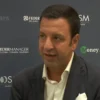Space expeditions, a roller coaster on the stock exchange, historic breakthroughs in research on the connection between AI and human intelligence: this 2020 truly was a crucial year for Elon Musk, the brilliant founder of Tesla, the best-selling electric car in the world. In this second part of the article, we’ll explain history and perspectives of the company.
Small, but huge
Despite the impetuous growth, Tesla remains very small compared to its competitors: in the first quarter of 2020, the Musk house produced 103,000 cars, compared to Toyota’s 2.4 millions. Tesla’s sales volumes in 2019 were good, with 367,500 cars, but last year (despite the crisis) Volkswagen sold 8.9 million cars, Toyota 8.5 million, FCA-Psa 7.1 million, General Motors 6.3.
Tesla, however, goes far beyond its actual dimensions, because Musk has been able to infuse it with a special aura, creating an army of followers in the public. Musk’s marketing strategy has managed to make Tesla perceive as “the global brand” of electric cars and this has given it an immense competitive advantage in terms of brand, an advantage that will become priceless when and if electric drive will prevail (Bloomberg has just estimated that electric-powered vehicles in circulation at the end of 2020 will be 10 million).
“The Hollywood-style launches of the 4 models following Model S (the Model X in 2012, the Model 3 in 2016, the SUV Roadster in 2017 and the Model Y in 2019) contributed to Tesla’s fame.”
At the end of last April, Tesla said it was about to develop a new lithium-ion battery that “combines a new generation nickel manganese and single crystal cobalt cathode”, and would be “capable of lasting for more than a million miles” (1.6 million kilometers).
The project, called «Roadrunner», aims to bring the price of batteries below 100 dollars per kWh. To be clear, today the cheapest battery costs 156 dollars per kWh; 2 years ago it cost $176 and 10 years ago $ 1,160. With the new $ 100 per kWh cobalt batteries, we could produce cars with more autonomy and cheaper. A 50 kWh battery would cost $ 5,000, against the current $ 8-10,000, so production and final prices would drop significantly.
17 years of financial statements at a loss (but now four quarters in profit)
In 2015 Forbes called Tesla “the most innovative company in the world”, and today the world is divided between Musk’s followers (who, often, are also his small and large shareholders) and skeptics who suspect a speculative bubble.
Despite the reputation of technological excellence, moreover, Tesla has always had loss-making financial statements and has also gone through moments of serious crisis: in 2013 there was a long talk of a sale to Google, albeit for 6 billion dollars. And at the end of 2019, Tesla accumulated a net debt of 7.5 billion.
Last June, for the first time in its 17 years, the house closed the fourth quarter in a row with profit: 143 million dollars in the third quarter of 2019 and 105 million in the fourth; 16 million in the first quarter of 2020 and 104 million in the second.
These are the latest financial statement data on an annual basis:
in 2017: revenues of 11.7 billion dollars, net income -2.2 billion
in 2018: revenues of 21.4 billion dollars, net income -1.1 billion
in 2019: revenues of $ 24.6 billion, net income -775 million
in 2020 (1st half): revenues of 12.0 billion dollars, net income +120 million.
The record of July 20th on the stock market (and the global capitalization record)
Tesla went public on Nasdaq on June 29, 2010, at $ 17 per share. Since then, on the stock exchange, neither the balance sheets nor the size have mattered. In 10 years, the stock has experienced shocking growth. The all-time high was reached last August 31: 498 dollars. “
On July 20, Forbes updated his ranking of the richest men in the world placing Musk in fifth place thanks to a personal fortune valued at 74.2 billion dollars. In March Musk was in “only” 31st place, with 25 billion.
Since then the roller coaster has come, with a collapse and then a recovery: on September 8th, also due to the announcement by General Motors of the acquisition of 11% in Nikola, the electric truck manufacturer, one of the main rivals of Tesla, the stock on the Nasdaq collapsed to 338 dollars. By 10 September it had already risen to 396.
The fact is that, roller coaster or not, Tesla today capitalizes on about 370 billion dollars and is the first car manufacturer in the world by market value: it is worth over 20 times FCA, 18 times Toyota, 14 times Ford, 8 times GM.
In early July, Musk confirmed that Tesla “will build fully self-driving vehicles by 2020.” The statement was received with skepticism by the competitors, used to the skilful marketing of Tesla’s founder: in fact, Musk has repeated at least once a year from 2016 that he is one step away from completely autonomous driving. It should be noted that since 2018 Musk’s remuneration is linked to the performance of the stock on the stock market, and in addition he obtains specific advantages if the capitalization exceeds 100 billion dollars: in 2020 it is expected that the CEO’s income will thus reach beyond the 350 million.
Musk’s announcements caused him an investigation by the Security Exchange Commission, which in the summer of 2019 had deemed illegal some Tweets in which Musk hypothesized a Tesla delisting. The SEC fined Musk for $ 40 million, forced him to leave the presidency (keeping him as CEO) and got Larry Ellison, the president of Oracle who has been the 2nd shareholder since January 2019, to take his place. Tesla’s individual after Musk (has 1.7%)
Translated by editorial staff-Noemi Galbiati
























